Next Level Playing By Paul Davids
$199.00 Original price was: $199.00.$29.00Current price is: $29.00.
Paul Davids Next Level Playing Course [Instant Download]
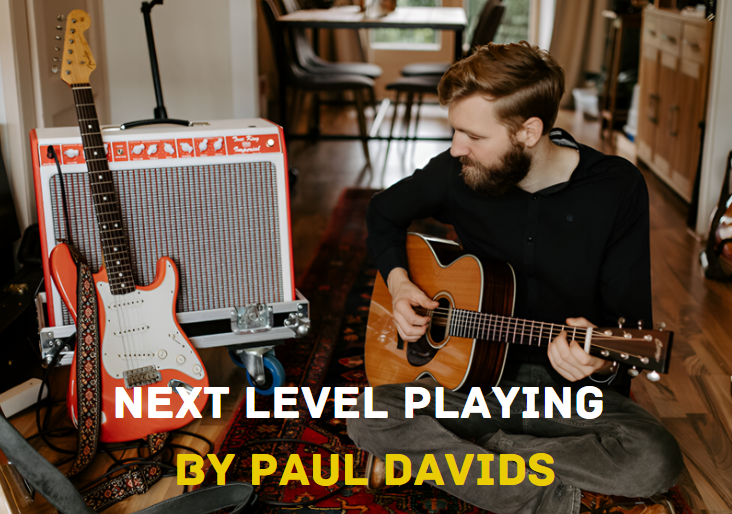
What is Paul Davids Next Level Playing?
Paul Davids Next Level Playing is a guitar course made for intermediate guitar players who feel stuck.
This 7-level course with 35+ videos teaches you how to create your own solos, understand useful music theory, and find notes anywhere on your guitar.
You’ll move beyond just copying other people’s songs and start making your own music.
The course also helps you gain the confidence to play with other musicians without feeling nervous or limited.
👉 Read more Paul David Guitar Courses:
📚 PROOF OF COURSE
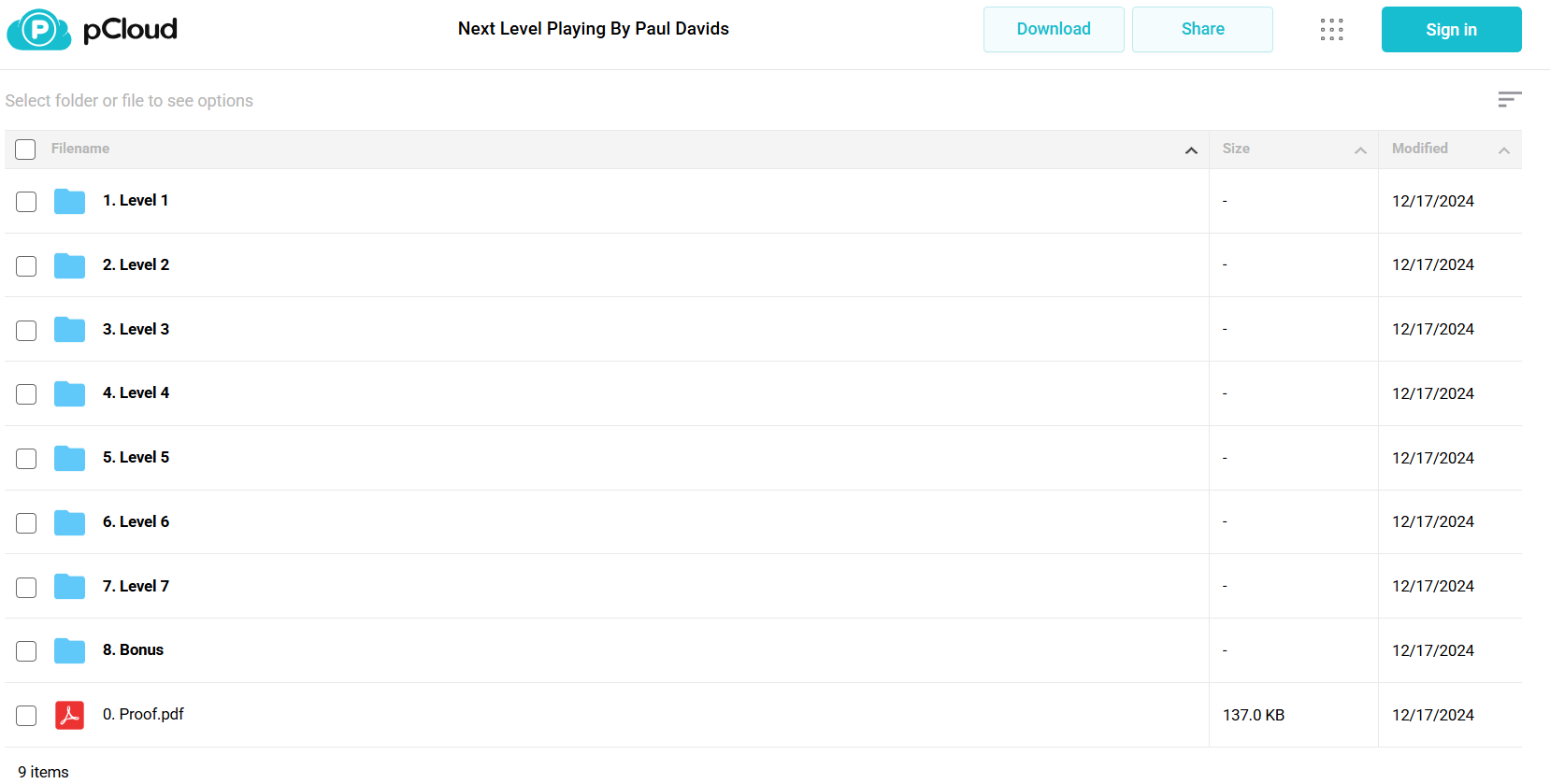
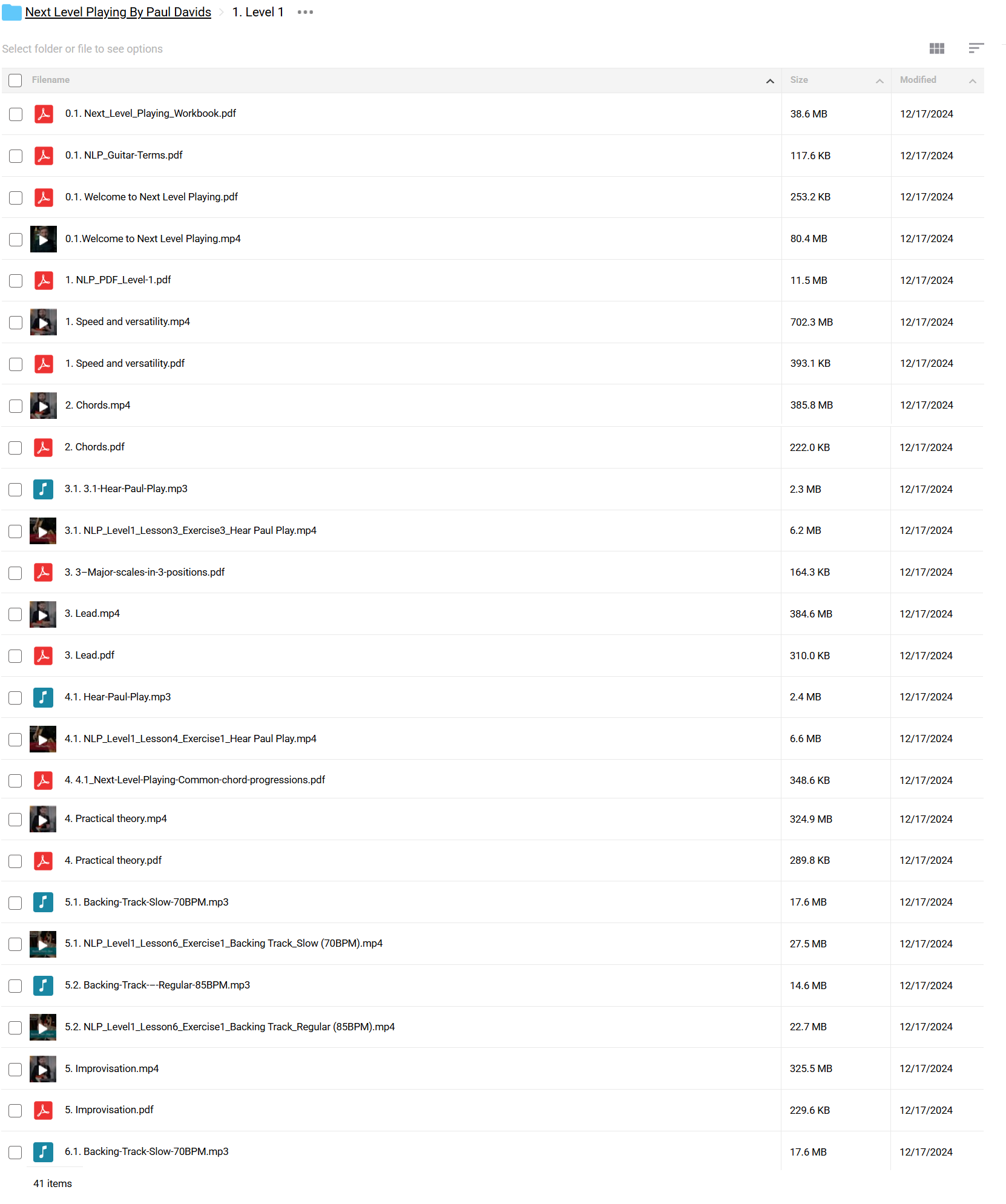
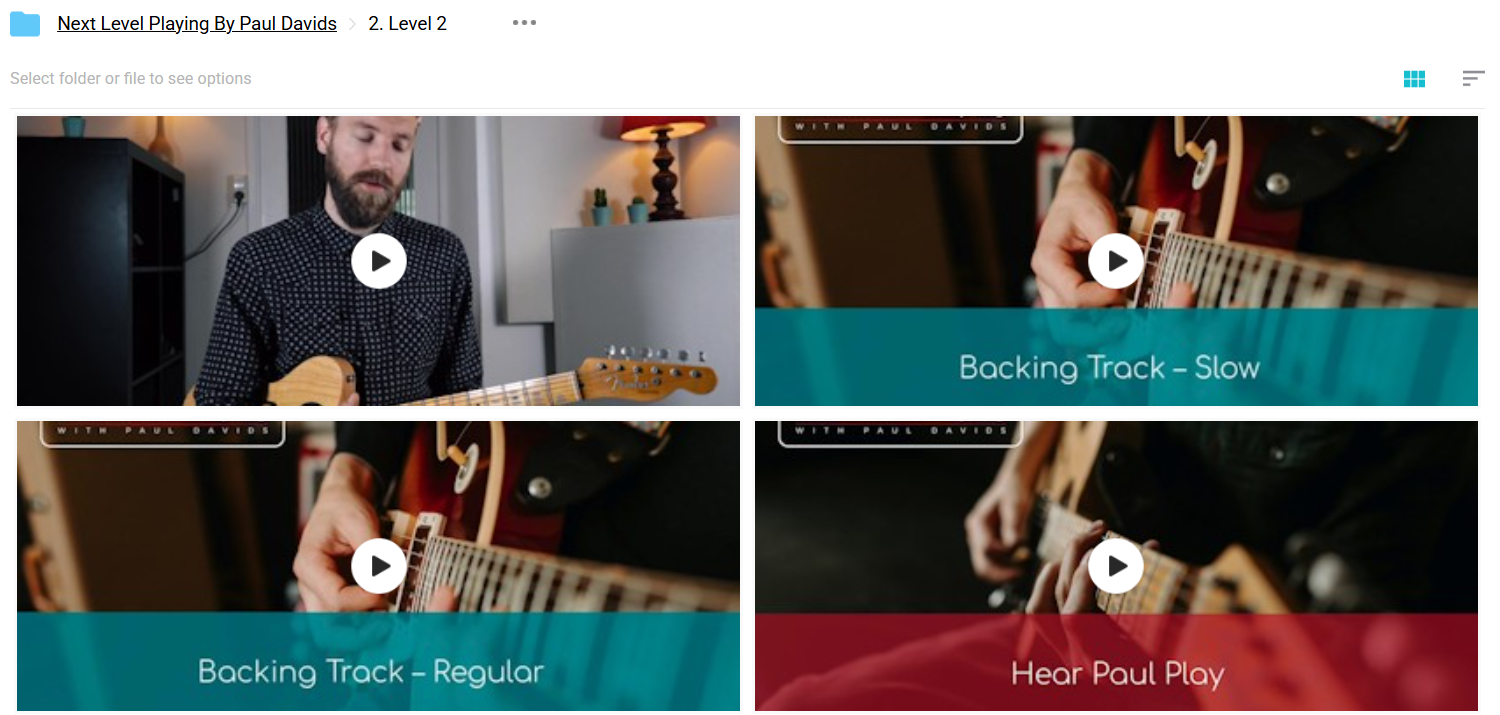
What you’ll learn in Next Level Playing:
Next Level Playing helps you understand your guitar better and break free from playing the same things over and over. Here’s what you’ll learn:
- Fretboard fluency: Find notes quickly anywhere on the neck
- Creative improvisation: Create solos that show your personal style
- Music theory application: See how chords, scales, and keys work together in real songs
- Advanced techniques: Get better at bending, hammer-ons, pull-offs, and expressive playing
- Ear training: Train your ear to recognize notes, chords, and progressions
- Jam session confidence: Play easily with other musicians, even on songs you don’t know
This approach changes how you relate to your guitar, moving you from memorizing patterns to creating your own music.
Paul David Next Level Playing Course Curriculum:
✅ Level 1: Building the Foundation
Level 1 establishes core skills needed for guitar proficiency. Students begin with speed and versatility exercises before learning essential chord structures and progressions.
The module introduces major scales in three positions and practical music theory concepts with common chord progressions. There’s a strong focus on improvisation fundamentals, leading to the “Optimistic Jam” solo where students apply their new skills.
Key lessons include the speed and versatility techniques in Lesson 1, which lay groundwork for future development, and the introduction of major scales in multiple positions. Students also learn Paul’s special technique that “changed it all” as mentioned in Lesson 7.
✅ Level 2: Expanding Your Skills
Level 2 deepens chord knowledge while introducing more complex lead techniques. The improvisation section builds on Level 1 concepts with more challenging backing tracks at various tempos.
Technical skills receive particular attention, with melody tabs provided to develop finger coordination and precision. The soloing module includes slow and regular tempo practice tracks, allowing students to hear Paul demonstrate the concepts before attempting them.
The highlight of this level is the triad chord trick taught in Lesson 6, accompanied by multiple backing tracks in different keys. The module also introduces interval training and ear training exercises, essential skills for musical development.
✅ Level 3: Developing Musicality
Level 3 takes a significant step forward with the introduction of 7th chords and more complex harmony concepts. Speed and versatility training continues with exercises to enhance technique and fluidity.
Practical theory expands to include jazz applications in different keys, while the lead section presents more sophisticated melodies and patterns. The “Aeolian Dream” solo brings together all concepts, providing a beautiful musical goal for students.
Advanced ear training continues with dedicated exercises (2A, 2B, 2C) that build upon the foundations established in previous levels. The jazz applications in both C and G keys represent a notable advancement in harmony understanding.
✅ Level 4: Refined Techniques
Level 4 explores genre-specific approaches, starting with reggae-influenced chord patterns. The speed and versatility section introduces more demanding exercises with multiple demonstrations from Paul.
Improvisation skills are expanded with “Embellished E major” concepts, while the lead section introduces the harmonic minor scale, particularly in A. The “Harmonic Patterns in E Minor” solo showcases how these advanced concepts combine into musical expression.
The module includes unique “out of the box” practice exercises that challenge students to think differently about their playing. Ear training continues to advance with three new exercise tracks designed to develop more sophisticated listening skills.
✅ Level 5: Advanced Musical Concepts
Level 5 focuses on sophisticated techniques beginning with picking exercises and funky syncopated rhythms. Fretting chord techniques receive dedicated attention to develop clean transitions and voicings.
The lead section explores arpeggio progressions, while chord lessons introduce new voicings and approaches. Practical theory covers the D Dorian scale and its applications, culminating in the “Dazzling Dorian Funk” solo.
A special bonus lesson on speed and accuracy helps students refine their playing precision. The self-test at the end ensures students have mastered concepts before moving to Level 6, with separate answer sheets provided for self-assessment.
✅ Level 6: Creative Expression
Level 6 begins with pentatonic scales in diagonal positions for enhanced versatility across the fretboard. Chord lessons focus on the popular I-V-vi-IV progression, applicable to countless songs.
The CAGED system is thoroughly explained in the practical theory section, providing a framework for understanding the entire fretboard. Lead techniques emphasize target note practice, culminating in a “Target Blues in Am” solo.
This level stands out for its comprehensive approach to fretboard navigation and increased focus on intentional note selection during improvisation. Ear training continues with three more advanced exercise sets.
✅ Level 7: Mastery and Integration
Level 7 represents the culmination of the course, beginning with standard 12-bar blues structures in A. The lead section explores the A Mixolydian scale and its applications in blues and rock contexts.
Improvisation receives further development with complex backing tracks, while the chord section introduces sophisticated progressions in Em. The “Everything is Connected” solo demonstrates how all previously learned concepts create cohesive musical statements.
The module includes a special lesson on guitar layering techniques featuring a collaboration with Samurai Guitarist. The final ear training exercises (6A, 6B, 6C) complete the ear development curriculum.
✅ Bonus Section
The bonus section provides additional resources to supplement the main curriculum. It includes Paul’s top 5 tips for improving improvisation, presented both as video and PDF.
A collection of backing tracks from various levels allows students to practice concepts across different tempos and musical contexts. These resources encourage ongoing practice and application of skills learned throughout the course.
Who is Paul Davids?
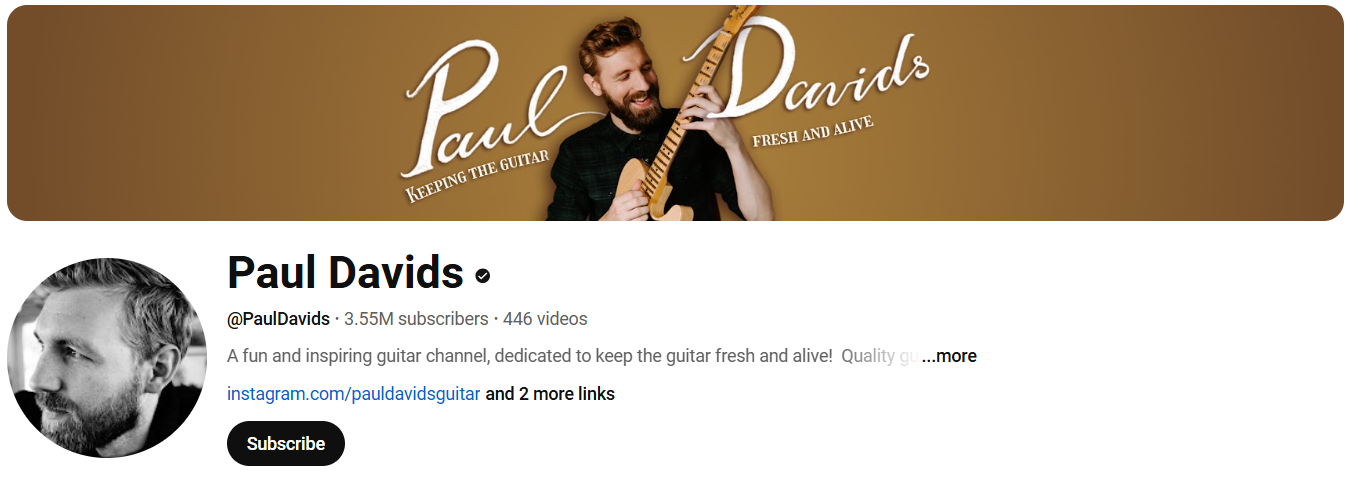
Paul Davids is a guitarist, teacher, and YouTube creator from Rotterdam, The Netherlands. His YouTube channel has over 3 million subscribers, making him one of the most popular guitar instructors online.
Paul started playing at age 12 with a red Squier guitar, dreaming of playing like Green Day and Metallica. He has a music degree with a teaching minor from Rotterdam Conservatory.
After years of making music, Paul started his YouTube channel to share his guitar knowledge. His clear teaching style makes difficult concepts easy to understand for all players.
In 2018, Paul created his first course, “Learn, Practice, Play” for beginners. After its success, he made “Next Level Playing” for intermediate guitarists who feel stuck and want to improve.
Paul still creates his own music and works with other musicians. He combines expert knowledge with a love for guitar, inspiring players worldwide.
Be the first to review “Next Level Playing By Paul Davids” Cancel reply
Related products
Arts & Hobbies



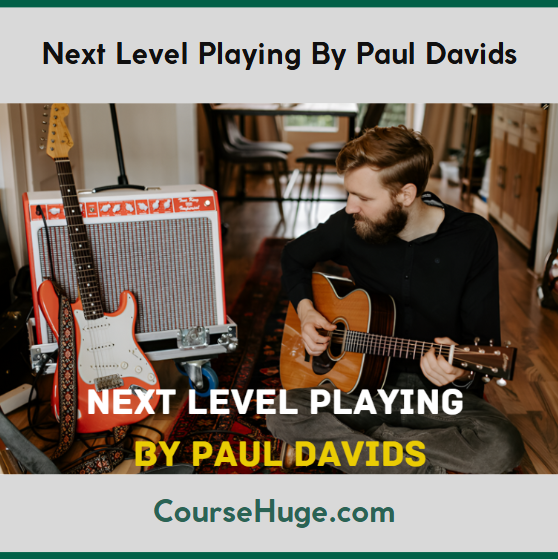





Reviews
There are no reviews yet.